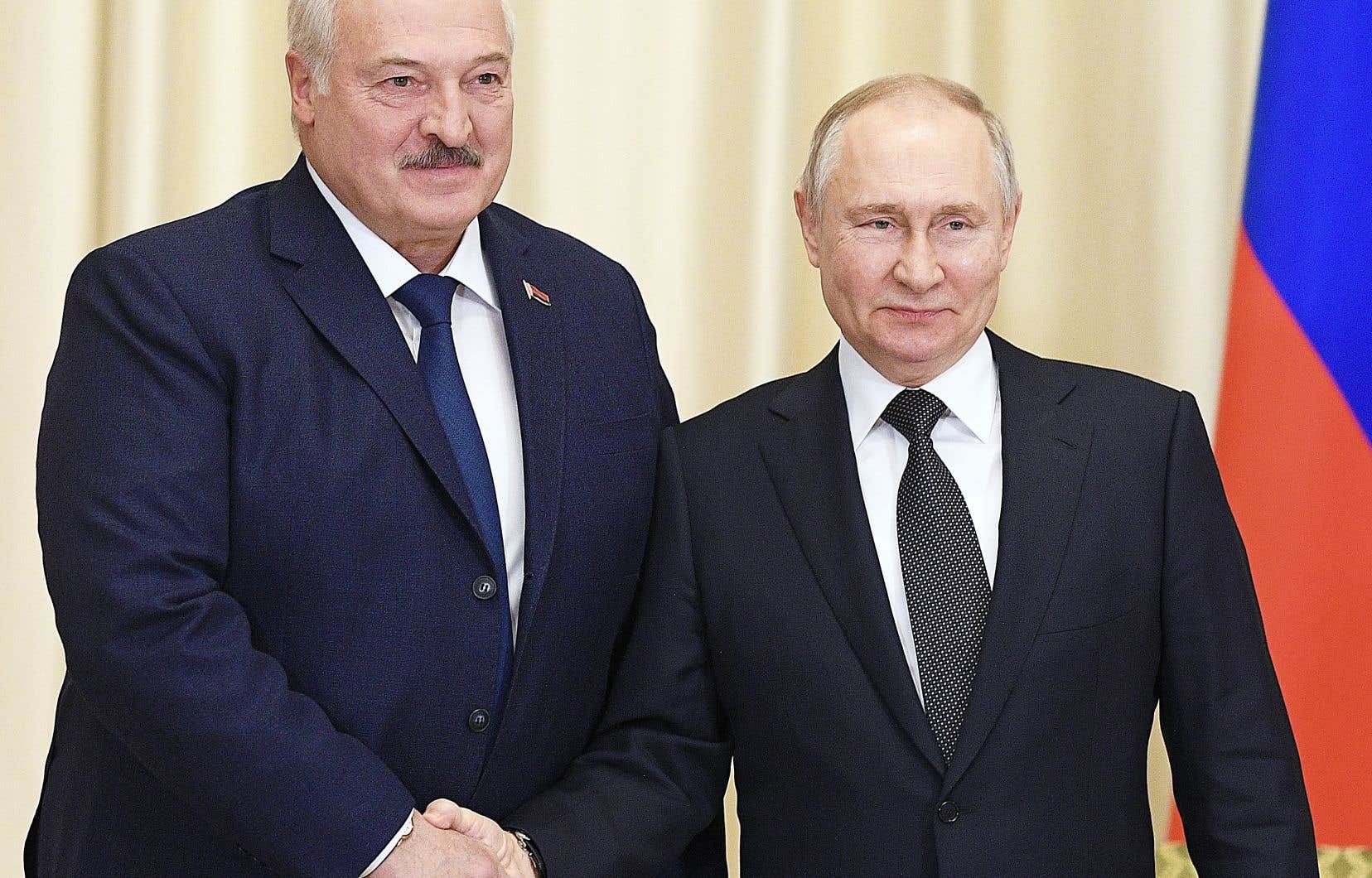Vladimir Putin is once again brandishing the threat of atomic weapons. The Russian president announced on Saturday that he wanted to station “tactical” nuclear missiles in a neighboring country, Belarus. A few days earlier, the British confirmed the delivery of “depleted uranium” ammunition to Ukraine. What to fear from this dangerous duel of radioactive weapons?
“In principle, we do the same as what they do. [Les États-Unis] have long been deploying their tactical nuclear weapons in the territory of their allies and training people there to fire them. With these words spoken on state television, Russian President Vladimir Putin once again raised the threat of nuclear war. Its army will use a neighboring country, Belarus, to station some of its weapons of mass destruction there. It will begin by “training the crews” from April 3 and estimates that it will be able to “complete the construction of a special warehouse for tactical nuclear weapons on the territory of Belarus” on April 1.er July. Ten planes have already been equipped to be ready to use this kind of armament, according to him.
Behind this martial declaration by the Russian president, many see a bluff, starting with the Americans. “The United States has seen no indication that Russia has yet transferred nuclear weapons to Belarus,” National Security Council spokesman John Kirby said Sunday. We saw no indication that [Vladimir Poutine] kept its promise or moved nuclear weapons. »
“We have not seen any changes in Russia’s nuclear posture that would cause us to adapt ours,” NATO spokeswoman Oana Lungescu said on Sunday.
The more they threaten to use nuclear weapons and then not do so, the less convincing they are.
“It’s not necessarily a bluff, it’s just that it doesn’t change much”, observes for The duty Émile Lambert-Deslandes, coordinator of the Strategic Analysis Network, a partner network of the Department of Defense of Canada. Russian nuclear missiles are already stationed 50 kilometers from the Polish and NATO border. A launch site was spotted in the Russian enclave of Kaliningrad by American scientists a few years ago.
“It is dangerous, on the other hand”, underlines Mr. Lambert-Deslandes. “In a sense, yes, the more they threaten to use nuclear weapons and then don’t, the less convincing they are. But they still have nuclear weapons and the ability to use them. It is a development which is not reassuring, because it demonstrates again that Russia is ready to use it, the nuclear weapon, to exert pressure, and to use it in an aggressive way. »
A political weapon
Ukraine was quick to react to this threat by urgently calling for an “extraordinary meeting” of the permanent members of the UN Security Council. “Ukraine expects effective actions, to counter the nuclear blackmail of the Kremlin, from the United Kingdom, China, the United States and France”, proclaimed the Ukrainian Ministry of Foreign Affairs in a press release .
This appeal is likely to remain a dead letter. Russia is to take over the presidency of this high body from April for one month.
The danger of an atomic escalation remains low, especially after the Chinese president’s recent visit to Moscow. Xi Jinping has cooled any Russian ardor for a hot nuclear war, according to European Union foreign policy chief Josep Borrell. President Xi reportedly told his Russian counterpart “very, very clearly” that he should not deploy such weapons, the top diplomat told reporters last week.
Furthermore, Beijing’s “peace plan” for Ukraine stipulates that “nuclear proliferation must be prevented and nuclear crisis averted”. The joint statement by Russia and China after their meeting last week states that “all nuclear-weapon states should […] withdraw nuclear weapons deployed abroad”.
“The fact that Russia decides to go ahead with this project with Belarus… It becomes embarrassing for China”, notes Émile Lambert-Deslandes.
A look at the calendar can also explain this threat from Putin. Its intention to place its pawns in Belarus was communicated on March 25, a holiday of “Freedom Day”, supposed to commemorate the birth, in 1918, of the People’s Republic of Belarus.
Depleted uranium
Uranium weapons will still enter the Ukrainian theater of war shortly, but on the yellow and blue side. The UK confirmed a few days ago that the delivery of their gift of 14 Challenger 2 tanks would be followed by an arsenal “including armour-piercing shells containing depleted uranium”.
This radioactive material does not explode. It looks like a very hard metal and is waste from the manufacture of nuclear reactors. These work with “enriched” uranium and, to produce this type of uranium, engineers transfer radioactivity from other uranium fragments. This so-called “depleted” uranium is thus emptied of approximately 40% of its radioactivity.
The radioactive danger of these munitions is therefore low, confirms the Canadian Nuclear Safety Commission. “The main risk associated with depleted uranium is not its radioactivity, but its chemical toxicity. Ingestion or inhalation of large amounts of depleted uranium may affect the kidneys. If small particles of depleted uranium were inhaled in large quantities for a long time, the main health problem would be an increased risk of lung cancer,” their experts say.
The advantage of these ammunition lies in the hardness of the uranium they contain and their ability to catch fire when heated. These assets make it an advanced weapon for piercing tank armor. The International Atomic Energy Agency even recognizes on its website that this type of ammunition “is very suitable for military use”.
With Agence France-Presse
